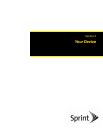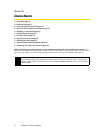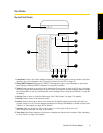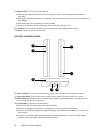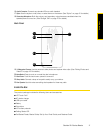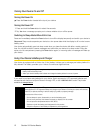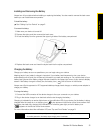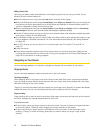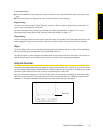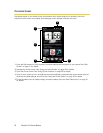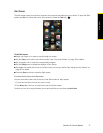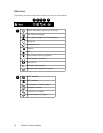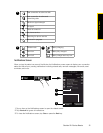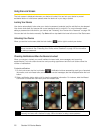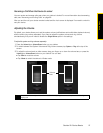
14 Section 2A. Device Basics
Battery Saving Tips
How long your battery power lasts depends on the battery type and how you use your device. Try the
following to help conserve battery life:
ⅷ When the device is not in use, press the Power button to switch off the display.
ⅷ Slide to the Settings tab, and then tap Sound & Display. Under Display tap Backlight. Here, you can specify the
time before your device automatically turns off the display and backlight to conserve battery power. For
optimum conservation, specify three minutes or less.
ⅷ Slide to the Settings tab, and then tap Sound & Display. Under Display tap Backlight. Clear the Automatically
adjust backlight
check box, and manually adjust the backlight brightness settings.
ⅷ Use the AC device charger to plug your device into an external power outlet whenever possible, especially
when using a modem or other peripherals.
ⅷ Turn Bluetooth off when you are not using it. Make your device visible to other devices only when you are
trying to establish a Bluetooth partnership. For more information about Bluetooth, see “Using Bluetooth”
on page 100.
ⅷ Turn Wi-Fi off when you are not using it. For more information, see “Turning Wi-Fi On and Off” on
page 147.
ⅷ Lower the volume.
ⅷ Close battery-intensive programs such as the camera when you are done using them. Make sure the
programs are ended and are not continuously running in the background. See “Using Task Manager” on
page 128 for information on closing programs.
Navigating on Your Device
You can use finger gestures or the stylus to navigate and interact with the interface of your device:
Finger gestures
You can use finger gestures to select, scroll and pan on the touch screen.
Touching or tapping
When selecting items on the screen, such as the Home screen tabs, Start screen, programs and settings
icons, and large onscreen buttons, simply tap them with your finger. Apply some pressure with your finger
pad when touching an item on the screen.
“Tapping” is touching the screen lightly and quickly with your finger pad or fingertip. On screens that display
smaller-size items, you can more accurately select an item by tapping it with your fingertip.
Finger-scrolling
Finger-scrolling can be used to scroll up and down Web pages, documents, and lists such as the contacts
list, file list, message list, calendar appointments list, and more.
To scroll up and down:
ⅷ To scroll down, swipe your finger upward on the touch screen. To scroll up, swipe your finger downward
on the touch screen. (“Swiping” means dragging your finger vertically on the screen.)
ⅷ To auto-scroll, flick your finger upward or downward on the touch screen. Touch the screen to stop
scrolling. (“Flicking” is similar to swiping, except that you need to swipe your finger in light, quicker
strokes.)




